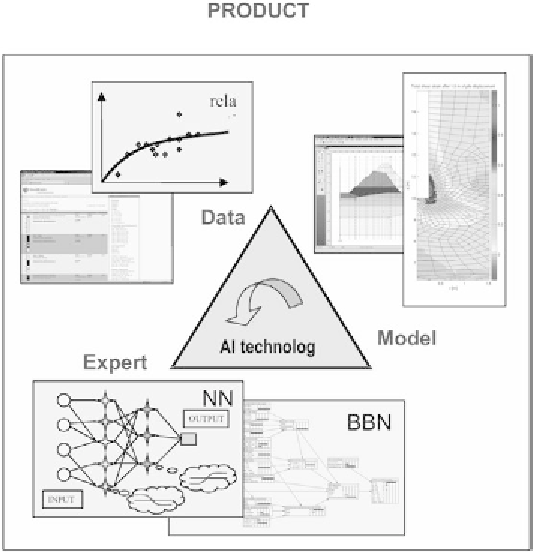Geoscience Reference
In-Depth Information
learn, from time to time, and they propose ad-hoc rules and equations based on
experience and field observations, but no unified framework of dissemination is
available to engineers. In recent years, the development of the tools of
computational intelligence such as fuzzy logic and artificial neural networks make
it possible for engineers to analyse experience, field and 'monitored' data of
construction and truly apply 'observational' methods as recommended by codes of
practice.
The concept GeoBrain, suggested by Deltares, is addressing systematic learning
by developing an experience database from case histories and disseminating these
experiences (Internet). This database, complemented with expert knowledge, can
be used to make better predictions. It provides a toolbox for an integral approach of
complex situations where the subsoil is an important risk factor, leading to a
comprehensive view on the objective and reproducible consequences of choices.
This development has a strong parallel with some other disciplines, like in medical
science where with diagnostic systems empirical knowledge is being translated into
generally applicable concepts. The present-day ICT makes this approach possible.
GeoBrain forms the brain-side complementary to common physical and numerical
facilities and it creates new relationships between the various knowledge sources
by coupling numerical prediction models and physical tests in an objective system
of data interpretations, predictions, practical experiences, expert views and test
results (Fig 8.12a). It combines - so to say - hard and soft data.
Figure 8.12a GeoBrain combines expertise, experience and efficiency

Search WWH ::

Custom Search